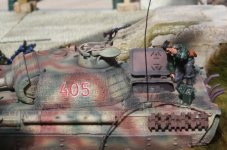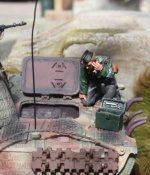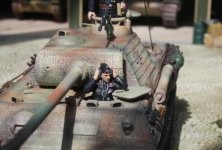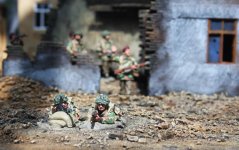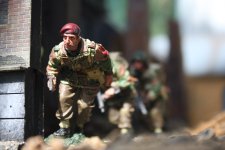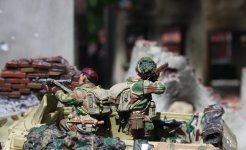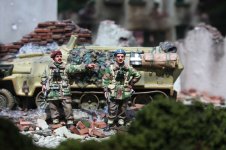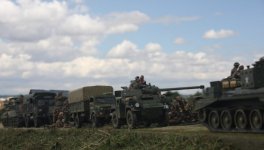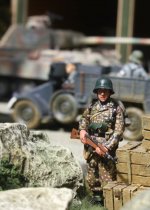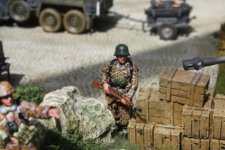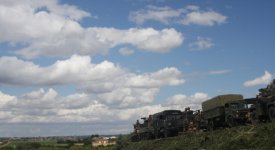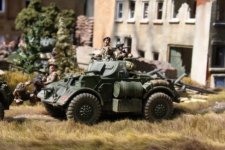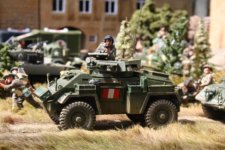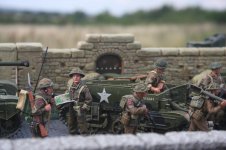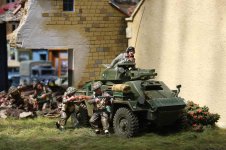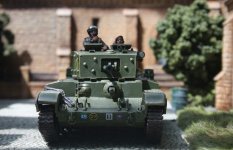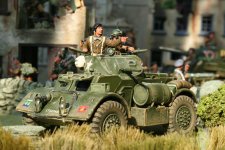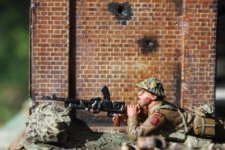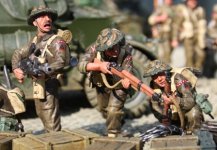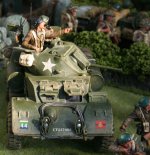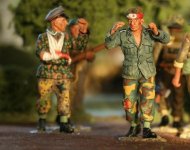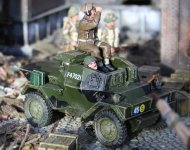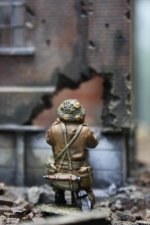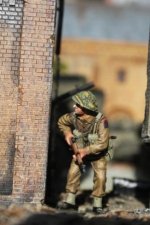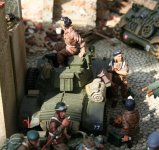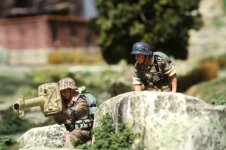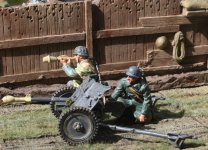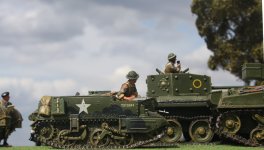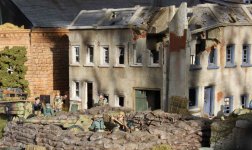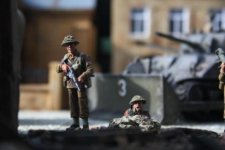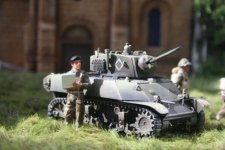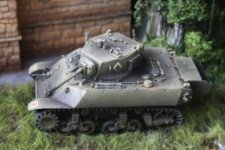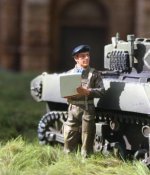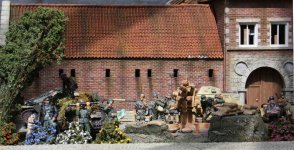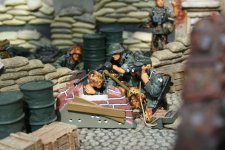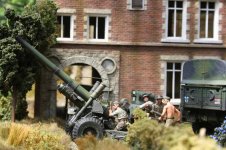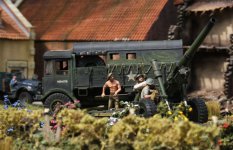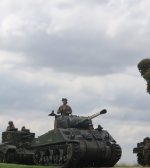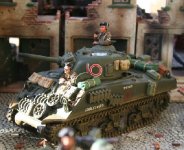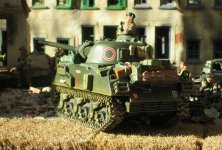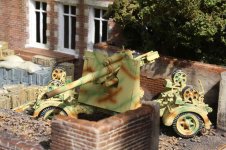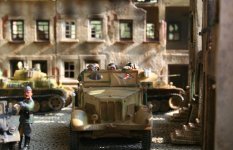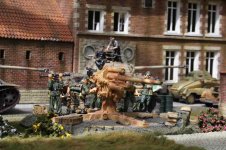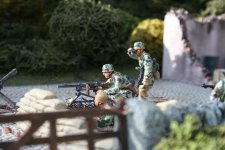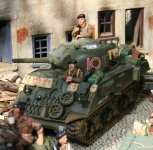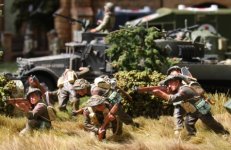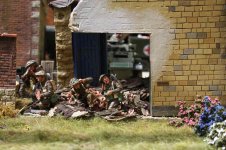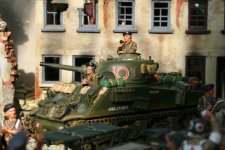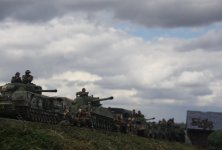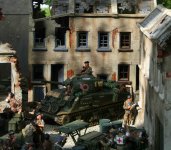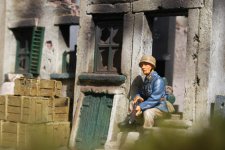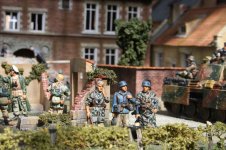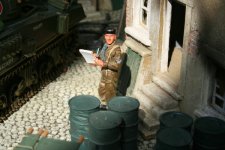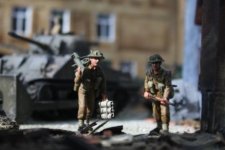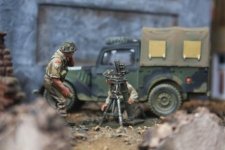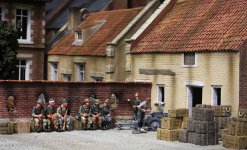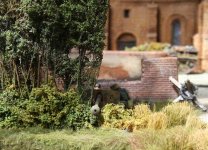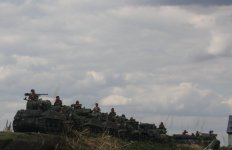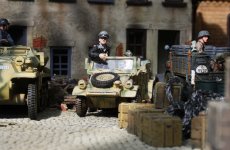panda1gen
Colonel
- Joined
- Jul 29, 2005
- Messages
- 8,144
Taking heavy losses We broke out of the bridgehead on 29 March, and we fought a running battle with stubborn and fanatical rearguards, slinging mortar and spandau fire at us. We fought our way through Sinderen and advanced to Varsseveld, where we ran into strong opposition, so we waited until nightfall. Then we took the place, without getting into too much trouble. We woke up in the morning after about an hour's sleep, and got put straight onto transport, which took us to Ruurlo. On the way we had a small fight over a Red Cross building, and then we advanced to Lochem.
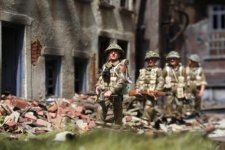
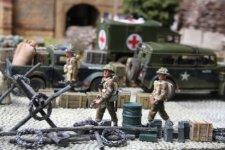
My section was given a house right on the edge of the town, almost the first house. We had to attack over a cornfield, and as we crossed the barbed wire fence I got caught, and I reckon it saved my life because by the time I got myself free the others were all dead. Killed by sniper fire, I had been in full view but did not get shot. I ran back and got a tank to fire at the trees where I thought the Germans were, then out they came, 30 odd Germans.
I went among them, looking for the sniper badges, I don't know what I would have done had I found any.
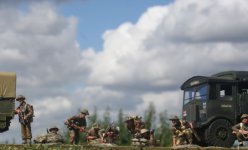
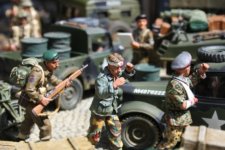
Brutal reality I then went over to the house we had to capture originally. The tank crew were already there having a cup of tea, and suddenly there was a ping as a bullet came through the window killing the tank driver. It could have been me or Johnny Martin, who was nearby, but it was his turn. The tank crew were very upset as they had been together since Normandy. We put the body on the tank, and went back to company headquarters, and stayed there for a couple of hours and had a hot meal and a drink.
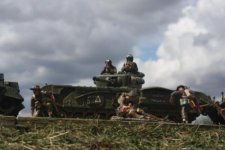
It was 1 April, and four years to the day since my wife brought my call-up papers to me in bed in London. Then I was secure in a nice house, young son and a caring wife. Now they had been bombed out and lost everything, and I was a long way from home, in a ruined farmhouse with the five bodies of my friends being taken away for burial, it was a brutal reality.
Last days of war
By the next day the town had been taken and we were on the way to Haarlo, where we rested for a few days, then on to Hengelo for four days. While we were there we found the headquarters of the local SS headman. We smashed every single thing in that house, not one thing of any use or value remained. I remember having a lot of fun in there. We also found an egg packing plant and we put out the word for everyone to come and help themselves. We had them, boiled, scrambled, even raw, and every which way. We all had wind for a few days, which gave us all a laugh. We then moved on to Oldenzaal as reserves. I don't remember much at this time as I was stilled dazed by the events at Lochem. We moved on through the countryside, but we no longer had contact with the Germans, and when ever we did catch them it seemed that someone else got the job of dealing with them, so apart from some shelling, and the odd bit of sniping, life had become fairly quiet, and we eventually got to Bremen.
The battle for Bremen wasn't particularly hard for us, and we took no casualties. From there we were supposed to take Bremerhaven, but Monty said stand down, and that was the end of the war, it all felt a bit strange. When we heard for sure that it was over, Tommy Handley said to me 'Come on Dick, lets have a service', but I said 'No mate, you take one if you want, but I'm going for a walk.' And I took myself off to be alone. There were only four boys left who had started out anyway, and I wanted to remember the mates I had lost in my own time. We were posted back to Celle and life was good, it was very relaxing, and all we had to do was guard duty, keeping the Germans safe from the Poles, but that's another story.
Richard Henry William Brew 2 August 1915 - 13 August 1997


My section was given a house right on the edge of the town, almost the first house. We had to attack over a cornfield, and as we crossed the barbed wire fence I got caught, and I reckon it saved my life because by the time I got myself free the others were all dead. Killed by sniper fire, I had been in full view but did not get shot. I ran back and got a tank to fire at the trees where I thought the Germans were, then out they came, 30 odd Germans.
I went among them, looking for the sniper badges, I don't know what I would have done had I found any.


Brutal reality I then went over to the house we had to capture originally. The tank crew were already there having a cup of tea, and suddenly there was a ping as a bullet came through the window killing the tank driver. It could have been me or Johnny Martin, who was nearby, but it was his turn. The tank crew were very upset as they had been together since Normandy. We put the body on the tank, and went back to company headquarters, and stayed there for a couple of hours and had a hot meal and a drink.

It was 1 April, and four years to the day since my wife brought my call-up papers to me in bed in London. Then I was secure in a nice house, young son and a caring wife. Now they had been bombed out and lost everything, and I was a long way from home, in a ruined farmhouse with the five bodies of my friends being taken away for burial, it was a brutal reality.
Last days of war
By the next day the town had been taken and we were on the way to Haarlo, where we rested for a few days, then on to Hengelo for four days. While we were there we found the headquarters of the local SS headman. We smashed every single thing in that house, not one thing of any use or value remained. I remember having a lot of fun in there. We also found an egg packing plant and we put out the word for everyone to come and help themselves. We had them, boiled, scrambled, even raw, and every which way. We all had wind for a few days, which gave us all a laugh. We then moved on to Oldenzaal as reserves. I don't remember much at this time as I was stilled dazed by the events at Lochem. We moved on through the countryside, but we no longer had contact with the Germans, and when ever we did catch them it seemed that someone else got the job of dealing with them, so apart from some shelling, and the odd bit of sniping, life had become fairly quiet, and we eventually got to Bremen.
The battle for Bremen wasn't particularly hard for us, and we took no casualties. From there we were supposed to take Bremerhaven, but Monty said stand down, and that was the end of the war, it all felt a bit strange. When we heard for sure that it was over, Tommy Handley said to me 'Come on Dick, lets have a service', but I said 'No mate, you take one if you want, but I'm going for a walk.' And I took myself off to be alone. There were only four boys left who had started out anyway, and I wanted to remember the mates I had lost in my own time. We were posted back to Celle and life was good, it was very relaxing, and all we had to do was guard duty, keeping the Germans safe from the Poles, but that's another story.
Richard Henry William Brew 2 August 1915 - 13 August 1997


